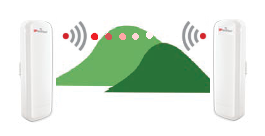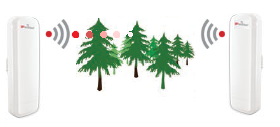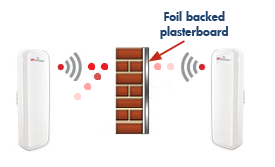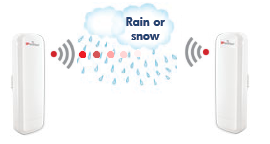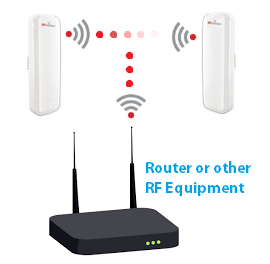|
1. The Signal will no go through hills. The density of the hill and water contained in the soil absorbs the microwave signal. |
|
2. The may will go through branches of trees but remember that microwave signals will be attenuated greatly by water. Leafs and plants are partly made up of water so the distance is reduced. It is best to avoid plants and trees when positioning. |
|
3. In modern buildings the structure can be lines with "foil" insulation or metal. This can refelect or "ground" the wireless signal. Avoid transmitting through such materials.
|
|
4. When installing the units in good weather the signal may be sufficient. However during heavy rain/ other poor weather the signals between the IPmitters will be absorbed, therefore reduce the distance achievable. Keep the distance between the two units as short as possible and within the recommended specification.
|
|
5. It is common that other RF equipment can interfere with the IPmitters, as the IPmitters use the same frequencies that routers and other WiFi equipment uses. This will reduce the range of the IPmitters and reduce the performance. Check the WiFi channels being used nearby to the IPmitter, or avoid placement of the IPmitters near other RF equipment and routers.
|
